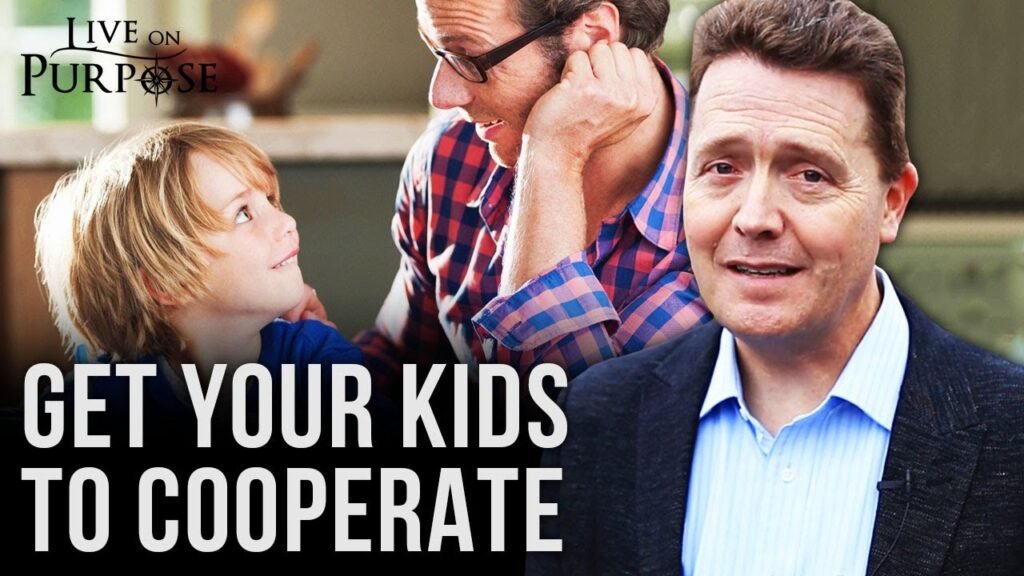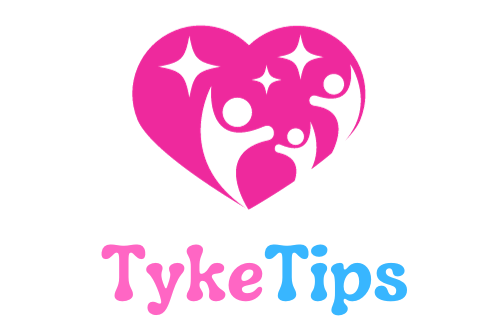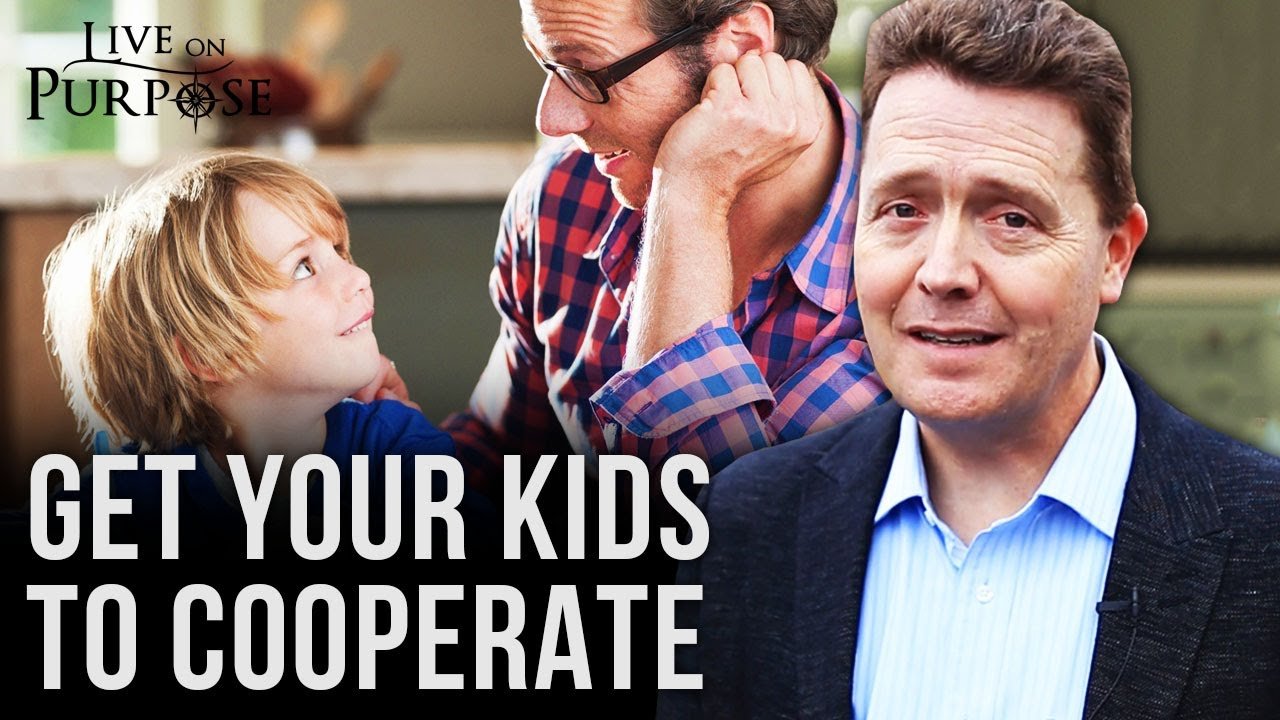In the video titled “How To Talk So Kids Will Listen” by Live On Purpose TV, they discuss the importance of setting an example when teaching kids. The tone of voice and presentation are key factors in effective communication with children. It is crucial to stay calm and analyze the stage that your child is in, as different stages require different approaches. Physically being in close proximity to your child, maintaining eye contact, and using appropriate body posture are all important aspects of effective communication. Managing the context and environment surrounding the conversation is also vital, as it can impact their ability to listen. Showing respect and earning their respect increases the likelihood that kids will listen and cooperate. This article provides valuable tips on how to effectively communicate with children to ensure they are listening and learning from us as parents.
Importance of Setting an Example
Setting an example is one of the most important aspects of teaching and communicating with children. Children look up to their parents and caregivers, and they learn a great deal from observing their behavior and actions. By setting a positive example, you can effectively teach children important values, skills, and behaviors.

Tone of Voice and Presentation
The way you communicate with children greatly influences how they listen and respond to you. Your tone of voice and overall presentation should be friendly, calm, and respectful. If you are upset or agitated, it can hinder effective communication with your child. Remember, you are the one who sets the mood, so starting with a calm and composed tone will create a positive atmosphere for communication.
Staying Calm and Analyzing the Child’s Stage
It is crucial to stay calm and composed when communicating with your child. Emotions can easily take over, but by staying calm, you allow your mind to work better and analyze your child’s stage of development. Understanding your child’s stage helps you tailor your communication to their level of understanding and cooperate with them based on their motivations.
Physical Proximity and Communication
Physical proximity plays a significant role in effective communication with young children. Being physically close to your child allows you to guide them and reinforce your words with actions. Instead of yelling from across the room, try to position yourself near your child so that you can physically guide them if needed. This close proximity ensures they are more likely to listen and follow your instructions.
Stature and Eye Contact
When communicating with children, consider your posture and eye contact. If you are taller than your child, towering over them and looking down can create an intimidating energy. Instead, get on their level by kneeling, sitting, or pulling up a chair. Maintaining eye contact shows that you are fully engaged and attentive, making it more likely for your child to listen and feel understood.
Managing Context and Environment
The context and environment in which you communicate with your child greatly impact their ability to listen and focus. Minimizing distractions, such as turning off the television or reducing background noise, helps create a conducive environment for communication. Additionally, considering the timing of your conversation can also play a significant role in ensuring your child’s attentiveness and receptiveness.
Body Posture and Showing Respect
The way you hold yourself and show respect through body language is essential when communicating with children. Be aware of your body posture and avoid being overbearing or intimidating. Instead, maintain an open and relaxed stance, showing respect for the child as an individual. Practicing active listening and empathy will further demonstrate your respect and foster a better connection with your child.
Earning Respect and Treating with Kindness
To effectively communicate with children, it is crucial to earn their respect and treat them with kindness. Modeling respectful behavior towards your child will teach them how to show respect in return. Avoid using harsh discipline or disrespectful language, even when upset. Encourage mutual respect by valuing and considering their perspective, and they will be more likely to listen and cooperate.
Tone of Voice and Presentation
When speaking to children, it’s important to choose the right tone of voice and presentation. Your tone should be inviting, positive, and gentle. Avoid using a harsh or overly authoritative tone, as it can cause children to shut down and not listen. By using a calm and friendly tone, you can create a welcoming environment that encourages open communication.
Being Clear and Concise
Children respond well to clear and concise instructions. Avoid using complicated or ambiguous language, as it can confuse children and make it difficult for them to understand what is expected of them. Use simple and direct language that is age-appropriate and tailored to their level of comprehension. By being clear in your communication, you increase the chances of children listening and following through.
Using Positive Language
Positive language is crucial when communicating with children. Rather than focusing on what they should not do, emphasize what they should do instead. Using positive language helps children feel encouraged and empowered, as they are more likely to respond positively to positive instructions. For example, instead of saying “Don’t run,” say “Please walk.”
Staying Calm and Analyzing the Child’s Stage
Understanding the different stages of child development is essential for effective communication. Every child is unique, and their abilities and motivations vary based on their stage of development. By staying calm and analyzing your child’s stage, you can adjust your communication to meet their specific needs.
Understanding Different Stages of Development
Children go through various stages of development, each with its own set of characteristics and challenges. Stage 1 is the least mature stage, typically seen in toddlers. At this stage, children respond mainly to external motivation. As children progress through different stages, their motivations change, and their ability to understand concepts and cooperate increases.
Externalized Motivation
In the early stages of child development, externalized motivation plays a significant role. Children are motivated by rewards and consequences that are imposed externally. Understanding this aspect of their development allows you to tailor your communication and provide the appropriate incentives or consequences to encourage their cooperation.
Adjusting Communication Based on Stage
Once you understand your child’s stage of development, you can adjust your communication strategies accordingly. For stage 1 children, being physically close and providing clear instructions is crucial. As children move into stage 2, they become more capable of cooperation, but still require close proximity and guidance. Ongoing analysis of their stage will help you adapt and communicate effectively throughout their development.
Physical Proximity and Communication
Physical proximity is a vital component of effective communication with children. Being physically close to your child while communicating helps them feel secure, valued, and attended to.
Importance of Physical Proximity
Physically positioning yourself near your child fosters a sense of connection and helps them focus on your words and intentions. When children feel physically close to their parents or caregivers, they feel more secure and are more receptive to listening and following instructions. This closeness allows you to guide them physically and helps reinforce your message.
Establishing Eye Contact
Eye contact is a powerful form of nonverbal communication that reinforces your attentiveness and engagement. Maintaining eye contact while speaking to your child shows that you are present and actively listening. It also helps in building trust and making your child feel heard and understood. Make a conscious effort to establish and maintain eye contact throughout your communication with your child.
Active Listening
Listening actively to your child is just as important as speaking to them. Show genuine interest in what they have to say and provide your full attention. Encourage them to express their thoughts and feelings openly, and actively listen by nodding, summarizing their words, and asking clarifying questions. Active listening validates their experiences and strengthens the bond between you.
Stature and Eye Contact
How you present yourself physically and the level of eye contact you maintain can influence the effectiveness of your communication with children.
Presenting as an Authority Figure
When communicating with children, it is important to present yourself as an authority figure, someone they can trust and respect. However, this does not mean appearing intimidating or overpowering. Instead, focus on projecting confidence, warmth, and approachability. A calm and composed demeanor combined with clear and respectful communication helps establish your authority while maintaining a positive connection with your child.
Maintaining Eye Contact
Maintaining eye contact during communication is crucial for building rapport and connecting with your child. Eye contact signals attentiveness and interest in what they have to say. It also promotes a sense of trust and mutual understanding. Avoid staring intensely, as it can be perceived as confrontational. Instead, maintain natural and comfortable eye contact throughout your conversation.
Building Trust
Maintaining appropriate eye contact and presenting yourself in a reassuring manner helps build trust with your child. When they can see that you are attentive and invested in their thoughts and feelings, they feel more comfortable opening up to you. This trust creates an environment where effective communication can thrive, and your child is more likely to listen and follow your guidance.
Managing Context and Environment
The context and environment in which you communicate with your child greatly impact their ability to listen and engage in meaningful conversation.
Minimizing Distractions
When engaging in conversation with your child, it is essential to minimize distractions in the environment. Turn off the television or reduce background noise to create a quiet and focused space. Removing distractions helps your child concentrate on the conversation and ensures that you have their full attention. By eliminating external disturbances, you can facilitate effective communication and meaningful connection.
Creating a Safe and Comfortable Space
Creating a safe and comfortable space for communication promotes open dialogue and trust. Ensure that your child feels physically and emotionally safe by providing a calm and welcoming environment. Consider the seating arrangement and position yourself at eye level with your child, allowing for easy eye contact and engagement. A comfortable and secure space encourages your child to express themselves freely and listen attentively.
Considering Timing
Timing plays a crucial role in effective communication. Be mindful of both your child’s and your own emotional state and energy levels. Choose a time when you and your child are both calm and open to conversation. Avoid starting important discussions when either of you is exhausted, hungry, or distracted. By considering timing, you can maximize the chances of having a constructive and productive conversation.
Body Posture and Showing Respect
The way you hold yourself and show respect through your body language significantly impacts communication with your child. By being mindful of your body posture, you can create an environment of respect and open dialogue.
Open and Relaxed Body Language
Your body language should convey openness, warmth, and approachability when communicating with your child. Avoid crossing your arms, as it can come across as defensive or closed off. Instead, keep your arms relaxed and your body open to create an inviting and receptive atmosphere. Smile genuinely, as it signals friendliness and helps put your child at ease.
Respecting Personal Space
Respecting personal space is essential when communicating with your child, as it establishes boundaries and a sense of autonomy. Allow your child to maintain their personal space and avoid invading it unnecessarily. Be mindful of their comfort level and adjust your proximity accordingly. Respecting personal space demonstrates your respect for their individuality and fosters a sense of trust.
Active Listening and Empathy
Active listening and empathy are fundamental aspects of showing respect during communication. Show genuine interest in what your child is saying and actively engage in the conversation. Reflect back their feelings and thoughts to demonstrate understanding and empathy. This active listening and empathetic approach shows your child that you value and respect their perspective, making them more receptive to your guidance.
Earning Respect and Treating with Kindness
Respect is a two-way street, and it is essential to earn your child’s respect while treating them with kindness and respect.
Modeling Respectful Behavior
Children learn by observing, so it is crucial to model respectful behavior in your interactions with them. Treat your child with kindness, generosity, and patience. Show them how to communicate respectfully by using polite language, listening attentively, and considering their feelings and opinions. By consistently modeling respectful behavior, you teach your child the value of treating others with respect in return.
Avoiding Harsh Discipline
While it is important to set boundaries and establish rules, avoid using harsh discipline when communicating with your child. Harsh words or punishment can damage your relationship and hinder effective communication. Instead, focus on using positive discipline techniques that involve setting clear expectations, providing guidance, and using logical consequences when necessary. A kind and understanding approach helps your child feel safe and encourages open communication.
Encouraging Mutual Respect
Encouraging mutual respect is vital for effective communication. Foster an environment where your child’s thoughts, feelings, and opinions are valued and considered. Encourage open dialogue by actively listening, asking open-ended questions, and genuinely acknowledging their perspective. When children feel respected and heard, they are more likely to reciprocate that respect and engage in meaningful communication.
Conclusion
Setting an example is crucial when teaching and communicating with children. By considering the importance of tone of voice and presentation, staying calm and analyzing your child’s stage, practicing physical proximity and communication, maintaining a respectful stature and eye contact, managing the context and environment, using an open body posture, earning respect and treating with kindness, you can create a positive and effective communication environment. By setting a positive example, you lay the foundation for meaningful connection and foster a healthy and supportive relationship with your child. Remember, effective communication is a lifelong skill that benefits both you and your child.

